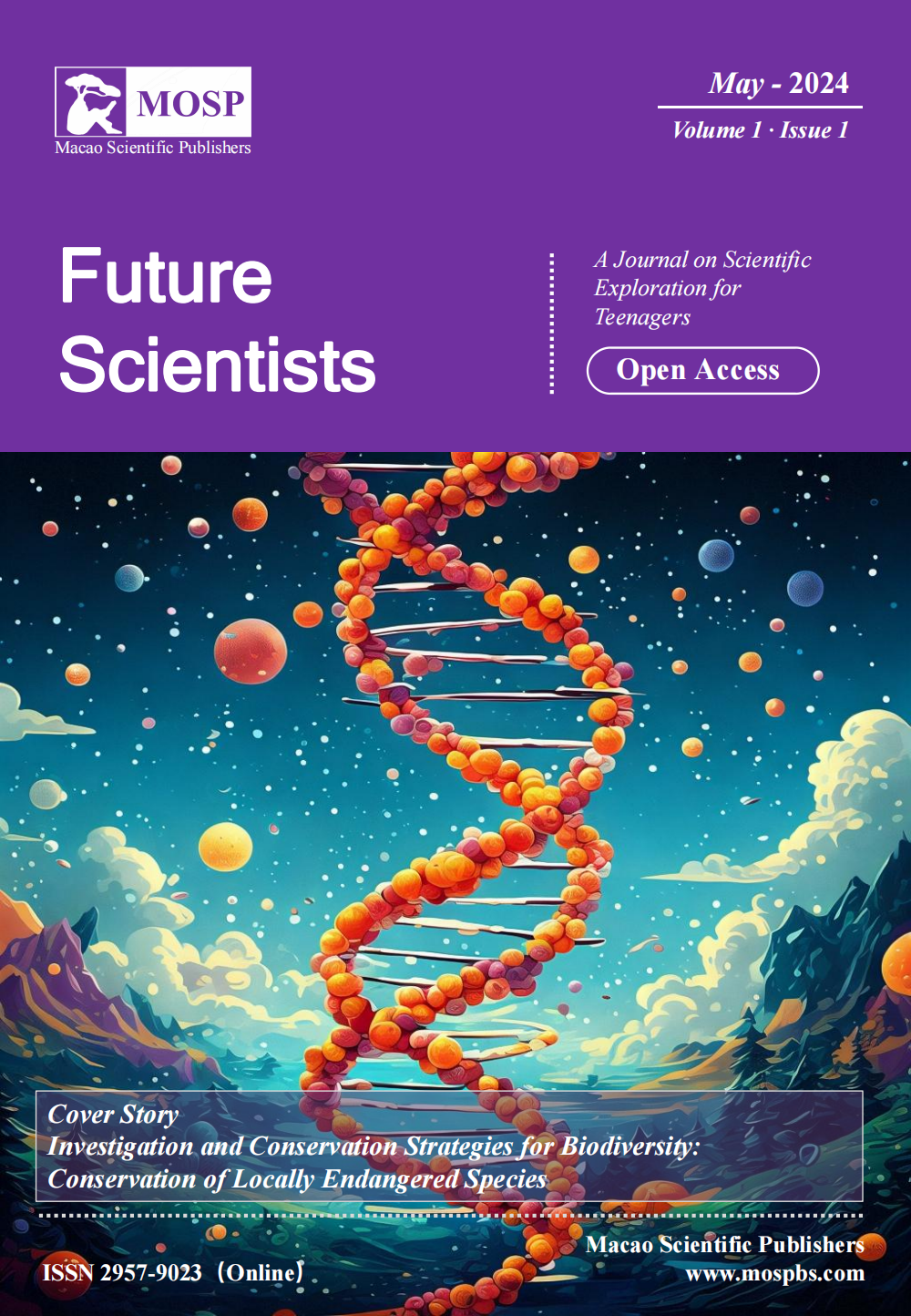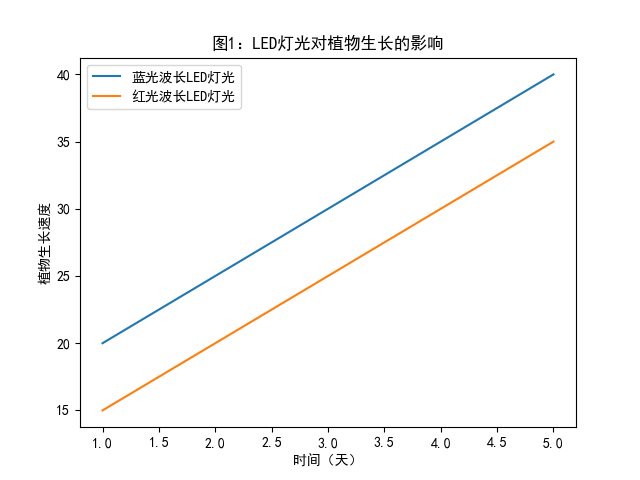
Abstract:
This study aims to explore the impact of LED lighting on plant growth by conducting experimental observations and data analysis of the growth of different types of plants under LED lighting. It reveals the internal mechanism of LED lighting on plant growth. The study found that LED lighting has a significant impact on plant growth rate, photosynthetic efficiency, and nutrient absorption, and there are differences in effects under different wavelengths and light intensities. LED lighting also affects the morphological structure and physiological functions of plants, promoting or inhibiting the plant growth and development process. This research is of great significance for revealing the mystery of plant growth and optimizing the environmental conditions for plant growth, providing theoretical basis and practical guidance for agricultural production and plant horticulture.
Keywords: LED lighting, plant growth, photosynthesis, lighting conditions, plant growth research, spectral adjustment, energy conservation, yield improvement
1. Introduce
1.1 Research Background
| Wavelength | Light Intensity | Impact |
| Red Light | High | Improves photosynthetic efficiency |
| Blue Light | Medium | Promotes plant growth |
| White Light | Low | Affects plant morphology |
Table 1: Research on the Impact of LED Lighting on Plant Growth
Plant growth has always been one of the focuses of attention. With the continuous development of LED lighting technology, more and more studies have shown that LED lighting has a unique role in plant growth. As a new type of light source, LED lighting has adjustable wavelengths and high photosynthetic efficiency and uniform illumination, so its impact on plants also varies at different growth stages. By irradiating plants under different wavelengths and light intensities, the biological effects of LED lighting on plant growth can be discovered, which can better explore the growth laws and physiological and ecological characteristics of plants.
Research has shown that the impact of LED lighting on plant growth mainly includes photosynthesis, photoperiodic effects, plant morphology, and physiological characteristics. LED lights of different wavelengths have a direct impact on photosynthetic efficiency and hormone content in plants, while the regulation of photoperiod can affect the flowering and growth cycle of plants. In practical cultivation, the use of LED lighting can better control the growth rate of plants, maintain the nutrient balance in plants, and increase yield and quality.
Therefore, as an efficient and energy-saving light source, LED lighting has broad application prospects in plant growth [1]. Exploring the impact of LED lighting on plant growth helps reveal the mystery of plant growth and provides an important basis for agricultural production and plant physiology research [2].
1.2 Research Objectives
The research on the impact of LED lighting on plant growth has significant practical implications. LED lighting can provide illumination for plants in indoor environments, enabling plants to grow normally even without sunlight. This is particularly important for urban agricultural production, allowing more crops to be grown in limited spaces, effectively increasing crop yields. The spectrum of LED lighting can be adjusted according to the needs of different crops, so that plants receive the most suitable illumination at different growth stages, thereby improving crop quality and yield.
LED lighting not only accelerates plant growth but also reduces energy consumption and light pollution. Compared to traditional high-pressure sodium lamps, LED lighting consumes less energy, has a longer lifespan, and generates less heat, reducing the risk of burning plant leaves. Additionally, LED lighting allows for more precise control of light intensity and spectrum, minimizing the impact of light pollution on the environment.
In terms of application prospects, the continuous development of LED lighting technology will provide more possibilities for future agricultural production and urban greening. By studying the impact of LED lighting on plant growth, we can design more intelligent lighting systems that effectively increase crop yield and quality, promoting the development of urban agriculture. LED lighting can also be used in urban landscaping and interior decoration, adding more green elements to cities.
In conclusion, the research on the impact of LED lighting on plant growth not only has significant implications for agricultural production but also promotes environmental protection and urban development, contributing to a brighter future for humanity.
2. The Basic Principles and Influencing Factors of Plant Growth
2.1 The Basic Process of Plant Growth
2.1.1 Photosynthesis
Photosynthesis is a crucial metabolic process in which plants utilize light energy to convert carbon dioxide and water into glucose and oxygen. It serves as one of the key links in plant growth and is also an important way to maintain the ecological balance of the Earth. During photosynthesis, plants use chlorophyll to absorb light energy, convert it into chemical energy, and release oxygen into the air.
Photosynthesis has a significant impact on plant growth and development. Factors such as light intensity, light quality, and photoperiod can affect the efficiency of photosynthesis and plant growth rate. In recent years, LED lighting has been widely used as a new type of light source for plant growth illumination. LED lighting boasts adjustable wavelengths, low energy consumption, and a long lifespan, providing suitable lighting conditions for plants to enhance photosynthesis efficiency, increase plant growth rate, and improve yield.
Studies have shown that under appropriate LED lighting, plants exhibit increased chlorophyll content, improved photosynthesis rate, shortened growth period, and vigorous growth. Therefore, the rational utilization of LED lighting's impact on plant growth can regulate plant growth and development, increase crop yield, and promote healthy plant growth.
In conclusion, the importance of photosynthesis in plant growth cannot be overstated. By studying the effects of LED lighting on plant growth, we can gain a better understanding of plant growth mechanisms, optimize plant growth conditions, promote healthy plant growth, and provide humans with more green and healthy plant products.
2.2 Factors affecting plant growth
2.2.1 The impact of lighting conditions on plant growth
Light conditions are one of the important factors affecting plant growth, and light intensity and light quality have a direct impact on plant growth [3]. Insufficient light intensity can lead to insufficient synthesis of chlorophyll in plants, affecting photosynthesis and growth and development. Excessive light intensity can cause excessive accumulation of photosynthetic products, affecting the normal function of plants. Different wavelengths of light also have different effects on plant growth. Red and blue light are the two main light qualities required for plant growth. Red light promotes photosynthesis in plants, while blue light promotes plant growth and development.
Research has found that LED lights, as an ideal lighting source for plant growth, can provide suitable light conditions to meet the needs of plants at different growth stages. By adjusting the light intensity and quality of LED lights, precise control of plant growth can be achieved, promoting plant growth, improving yield and quality [4].
Future research directions will focus more on exploring the specific impact mechanism of light conditions on plant growth, further optimizing the ratio and control methods of LED lights to better meet the growth needs of different plants. As a green and energy-saving light source, LED lights have broad application prospects in modern agriculture and will bring new breakthroughs to future agricultural production.
By studying the impact of light conditions on plant growth, we can not only promote the progress of plant growth technology, improve crop yield and quality, but also explore the mysteries of plant growth, providing theoretical support for humans to better utilize plant resources.
3. The Application of LED Lighting in Plant Growth
3.1 The Principle of LED Lighting

LED lighting, as a new type of illumination method, has been widely applied in the agricultural field in recent years. This study aims to explore the effects of LED lighting on plant growth, particularly in terms of plant growth rate, plant health, and yield [5]. The results indicate that the different wavelengths and light intensities of LED lighting have significant impacts on plant growth [6]. Among them, blue and red wavelengths of LED lighting demonstrate a promoting effect on plant growth, enhancing the growth rate and health status of plants. However, excessively high or low light intensities can have negative impacts on plant growth, resulting in poor or slow growth. The application of LED lighting also produces different effects on plants at different growth stages, requiring targeted selection of LED lighting wavelengths and intensities for different plant species [7]. Therefore, the rational utilization of LED lighting in agricultural production can effectively improve plant growth rate and yield, bringing new development opportunities to agricultural production.
3.2 The mechanism of action of LED lighting in plant growth involves several key factors
The mechanism of LED lighting in promoting plant growth lies in photosynthesis. Photosynthesis is the process where plants utilize light energy to convert carbon dioxide and water into energy. LED lighting provides the specific wavelengths of light energy required by plants, thus enhancing photosynthesis. Additionally, LED lighting can regulate the synthesis and transportation of plant growth hormones such as gibberellins and auxins, further influencing plant growth and development.
However, the impact of LED lighting on plant growth is also influenced by several factors. The light intensity and duration of LED lighting play crucial roles in plant growth, and different plants have varying demands for light. The wavelength of LED lighting also affects plant growth, as different wavelengths have varying impacts on plant growth and flowering [8]. Other factors like the distance and angle of LED lighting also influence the absorption and utilization efficiency of light energy by plants.
Therefore, it is essential to select appropriate parameters such as light intensity, wavelength, and irradiation distance of LED lighting based on different plant species and growth stages to achieve the best effect in promoting plant growth. In the future, with the continuous development and improvement of LED lighting technology, its application in plant growth will become increasingly widespread, bringing more opportunities and challenges to agricultural production.
4. The Impact of LED Lighting on Plant Growth
4.1 The Impact of LED Lighting on Plant Growth
Existing studies have shown that LED lighting has a significant impact on plant growth. LED lights with different wavelengths can promote or inhibit plant growth and development. For instance, red light typically stimulates photosynthesis and growth, while blue light affects plant morphology and physiology. Additionally, plants vary in their response to different wavelengths, with some being more sensitive to red light and others to blue light [9].
The light quality and intensity of LED lighting also have an effect on plant growth. Appropriate light quality and intensity can enhance photosynthetic efficiency, promoting plant growth and development. However, excessively high or low light intensities can inhibit photosynthesis, affecting plant growth.
Notably, LED lighting, as a green and environmentally friendly light source, has gradually gained widespread application in the field of plant growth. By properly configuring the spectrum and light intensity of LED lighting, the growth rhythm and quality of plants can be effectively controlled. Therefore, research on the impact of LED lighting on plant growth not only helps improve the efficiency and yield of plant growth, but also contributes to energy conservation and reduces light pollution. In the future, the application prospects of LED lighting in the field of plant growth will be even broader.
4.2 A Comparative Study on Plant Growth under Different Lighting Conditions
In the field of plant growth research, lighting conditions have a significant impact on plant growth. This study aims to explore the comparative growth of plants under different lighting conditions by investigating the impact of LED lighting on plant growth [10].
During the experiment, we established different lighting condition groups, using LED lights with varying wavelengths and light intensities to irradiate the plants. We measured relevant plant growth parameters such as growth rate and leaf color. After comparative analysis, we found significant differences in plant growth under different lighting conditions.
To better understand the mechanism of how plant growth is affected by lighting, we introduced a mathematical model of photosynthetic rate to describe plant growth under different lighting conditions. The model is presented as follows:
Wherein, Pmax represents the maximum photosynthetic rate of the plant under light saturation, I represents the light intensity, and P represents the plant's ability to respond to light. With this model, we can quantitatively analyze the impact of different lighting conditions on plant growth and draw conclusions.
Through this study, we have deeply explored the impact of LED lighting on plant growth and provided valuable insights for research on plant growth under various lighting conditions.
5. Conclusion and Prospect
LED lighting plays a significant role in plant growth. By adjusting the wavelength, light intensity, and lighting duration of LED lights, it can promote photosynthesis and the growth and development process of plants, thus enhancing their growth rate and yield. As a green and environmentally friendly light source, LED lighting boasts advantages such as energy saving, long lifespan, and strong adjustability, making it have broad application prospects in modern agriculture. By studying the impact mechanism of LED lighting on plant growth, we can further optimize the lighting conditions for plant growth, improve the quality and yield of crops, and promote the development of agricultural production. LED lighting can also be used in urban landscaping and interior decoration, creating more green and healthy living environments for people in cities. In the future, the continuous development of LED lighting technology will bring more possibilities to agricultural production and urban greening, creating a brighter future for human beings.
Funding
This research received no external funding.
Author Contributions
All authors have read and agreed to the published version of the manuscript.
The authors declared that they have no known competing financial interests or personal relationships that could have appeared to influence the work reported in this paper.
References
